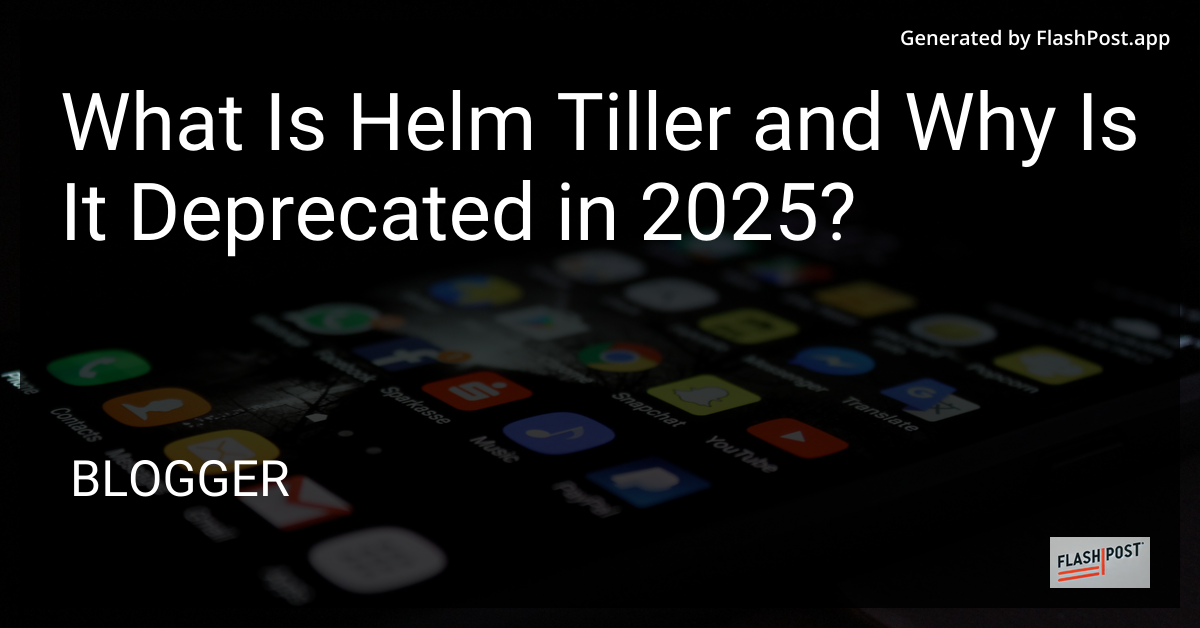What Is Helm Tiller and Why Is It Deprecated in 2025?

What is Helm Tiller and Why is it Deprecated in 2025?
Helm has been the go-to package manager for Kubernetes, streamlining application deployment and management. One of its components, Helm Tiller, played a critical role in facilitating this process. However, as Kubernetes and its surrounding ecosystem have evolved, Tiller’s existence is being phased out. Let’s dive deeper into what Helm Tiller is, its purpose, and why its deprecation is slated for 2025.
Understanding Helm Tiller
Helm operates as a powerful tool for managing Kubernetes packages, often dubbed as “Kubernetes Charts”. These charts are a collection of files that describe a set of Kubernetes resources. Initially, when Helm was introduced, the need for a server-side component prompted the creation of Tiller.
Role of Tiller
Tiller acted as Helm’s server-side component that interacted directly with the Kubernetes API server. It managed the lifecycle of Helm releases and performed operations such as installing, upgrading, and uninstalling charts. Tiller allowed multiple users to work on the same Kubernetes cluster by tracking each user’s installation state and permissions.
The Shift Away from Tiller
Security Concerns
The centralization of this control in Tiller posed security risks. Since Tiller needed wide-ranging permissions within a cluster, it became a potential attack vector. Security-conscious users and enterprises began to voice concerns about the elevated privilege model required for Tiller, making clusters more vulnerable.
Simplification and Client-Side Capabilities
Newer versions of Kubernetes improved client-side capabilities. This change allowed the Helm team to enhance the client-side processing of charts, reducing the need for Tiller’s server side functionality. With the release of Helm 3, Tiller was removed, and its responsibilities were shifted to client operations, simplifying Helm’s architecture.
Why Helm Tiller is Deprecated in 2025?
Community Feedback and Advancements
By 2025, Kubernetes’ ecosystem will have evolved significantly. Feedback from the community and advancements in Kubernetes security and management have made the server-side functionality redundant. Helm 3, which eliminated Tiller, is widely adopted, offering a more secure, simplified user experience. Users now have greater direct control over their releases without compromising on security.
Encouraging Best Practices
The deprecation of Tiller aligns with Kubernetes best practices, encouraging a model where users implement least-privilege permissions and maintain the autonomy of user-specific configurations and releases. This deprecation signifies a move towards more secure and decentralized Kubernetes management.
Conclusion
As of 2025, Helm Tiller will be deprecated, marking the end of an era in Kubernetes management. The deprecation reflects a maturation of the Kubernetes ecosystem, addressing long-standing security concerns and embracing a streamlined approach to package management. To learn more about using Helm efficiently in the evolving landscape of Kubernetes, check out our Kubernetes Helm Chart Tutorial.
For those interested in topics like snowboarding helmets or attaching helmet cameras, we have some insightful resources for you.
Stay tuned for more updates and continue to leverage the best practices in Kubernetes management.
Comments
Post a Comment